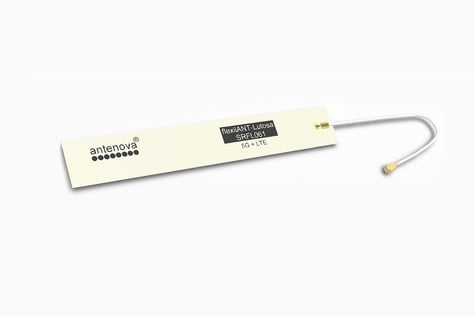If your product brief specifies the need for tracking, mapping or navigation functionality, you will need a GNSS antenna. This functionality relies on precise accuracy and effective antenna performance. However, GPS, Galileo, GLONASS and BeiDou applications can provide real antenna integration issues.
The very nature of the technology, with signals emanating from 20,000km from land, provides challenges that need to be circumvented through an intelligently integrated wireless antenna.
These weak signals are highly prone to interference, are reflected and susceptible to noise internal to a device. This poses some real antenna integration issues, particularly when accurate, timely data is a core component of these applications.
It is always recommended that you take a holistic view of antenna performance and development, as antenna performance is purely a product of it’s operating environment. You should be aware of how each and every design decision you take could impact your antenna. Here’s how to avoid technical disaster, and ensure your product works first time round:
Choosing the right antenna
With weak signals, your selection of antenna is of paramount importance. The most appropriate type of antenna will vary on your design, so don’t simply seek out the most attractive looking datasheet to base your decision on. You need to ensure that your selected antenna will integrate with minimal performance degradation.
Whilst ceramic patch antennas are a popular choice, they cannot always provide the effective performance parameters in smaller footprints. This is due to their reliance on the size of the ceramic pane that collects RF energy, which when smaller narrows the operating frequency band and lowers performance.
Surface mounted antenna can provide superior performance in a smaller footprint. Their radiation pattern allows them to more flexibly integrate into designs, as there is more variation in their placement guidelines.
No matter which antenna you select, you will face some challenge in enhancing performance in a small, SMART device.
Antenna Placement
Antenna placement is one such challenge. For ceramic patches, you will need to ensure that your antenna is located on a symmetrical ground plane for optimum performance, this may be in the centre of your PCB. Due to the radiation patterns, it will also need to be pointed upward - towards the sky - to receive an accurate signal.
For surface-mount antennas, each will have a different optimum location based upon it’s characteristics, however, this is usually on the corner of the PCB. This will need to be away from any other interfering signals or sufficiently isolated.
PCB Design
Antenna operating on low power, low bandwidth GNSS frequencies require absolutely minimal noise interference from the operating environment. Noise can source from nearby components, LCD displays and batteries. Your ground plane space should be as free from metallic or magnetic objects as possible.
Noise produced from these components can obstruct signals, or even block them altogether. In an ideal situation, your antenna should be positioned well away from these for maximum performance.
Trace Lines
Matching is also an important consideration to achieving high levels of performance. In GNSS applications, whereby received power is extremely low, any reflection coefficient can detrimentally affect performance.
This means that antenna trace lines also need to be optimised and correctly matched to the antenna. Longer trace lines will create an environment where interference is more likely and return loss (VSWR) is likely to surface as an issue - these should, therefore, be as short as possible and run on the edge of the PCB if possible. Correctly matching a GNSS antenna is essential to achieving high levels of performance.
Conclusion
Working with GNSS frequencies poses unique challenges to engineers. The consequences of overlooking some of the fundamental RF principles to meet your brief may render a device unable to work, receive inaccurate data or work ineffectively. Ultimately, in SMART devices, the wireless elements of these products add the value to the product over their non-SMART counterparts.
It’s essential you take great care in your design. Select the most appropriate antenna for your application first - not just by reviewing datasheets, but for your application - and review performance implications of every design decision made.
Antenova’s selection of surface-mounted antennas are designed for integration, with the aim of simplifying the design-in process by giving you guidance, advice and reviewing your designs. You no longer need a dedicated RF team to make sure your devices work the first time round; there’s no need to make your design an RF gamble.




